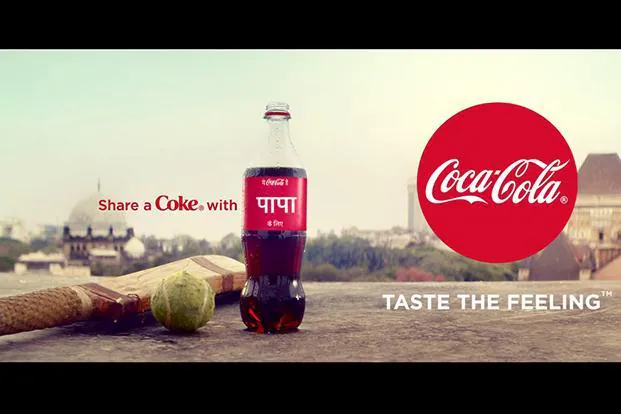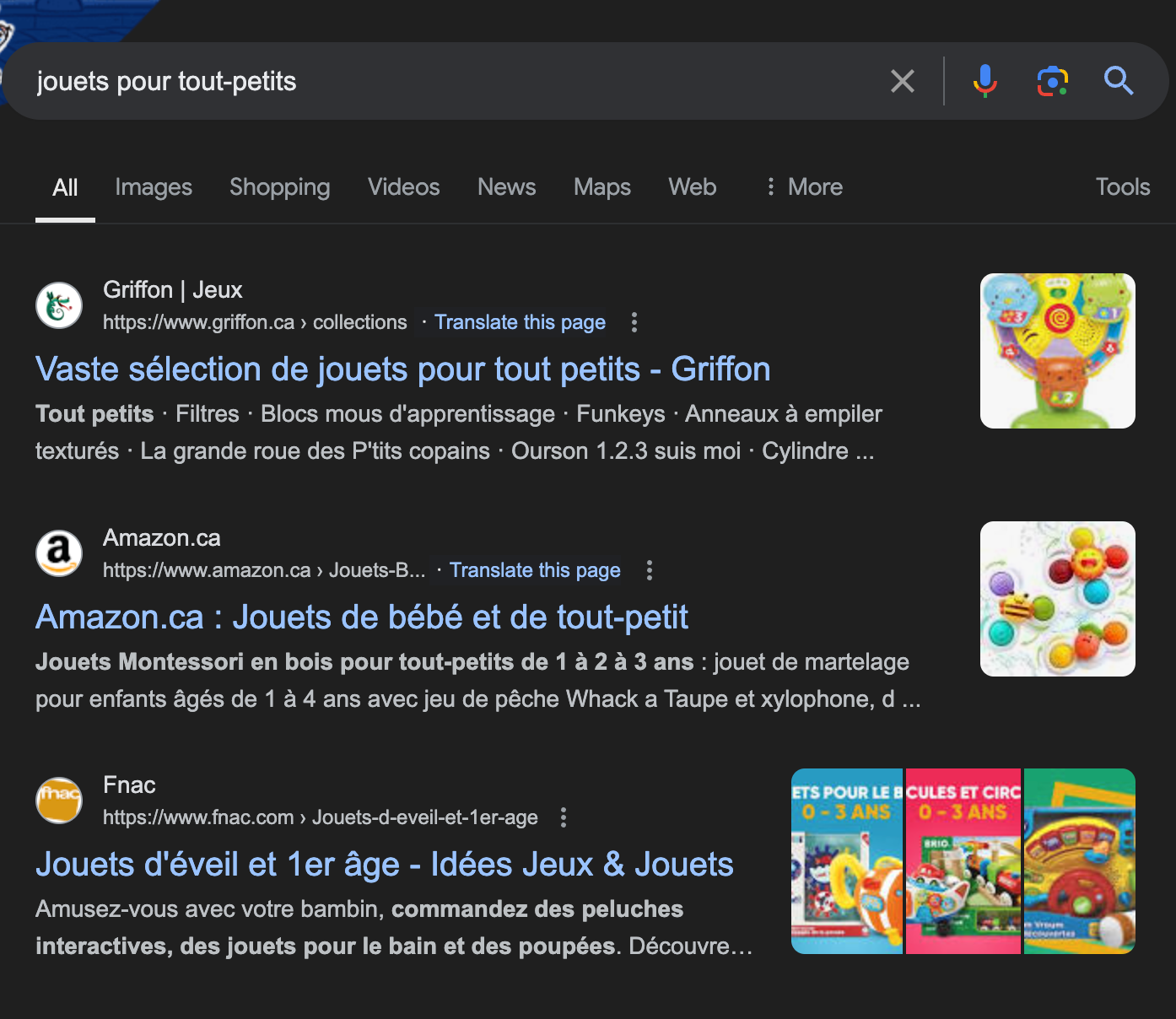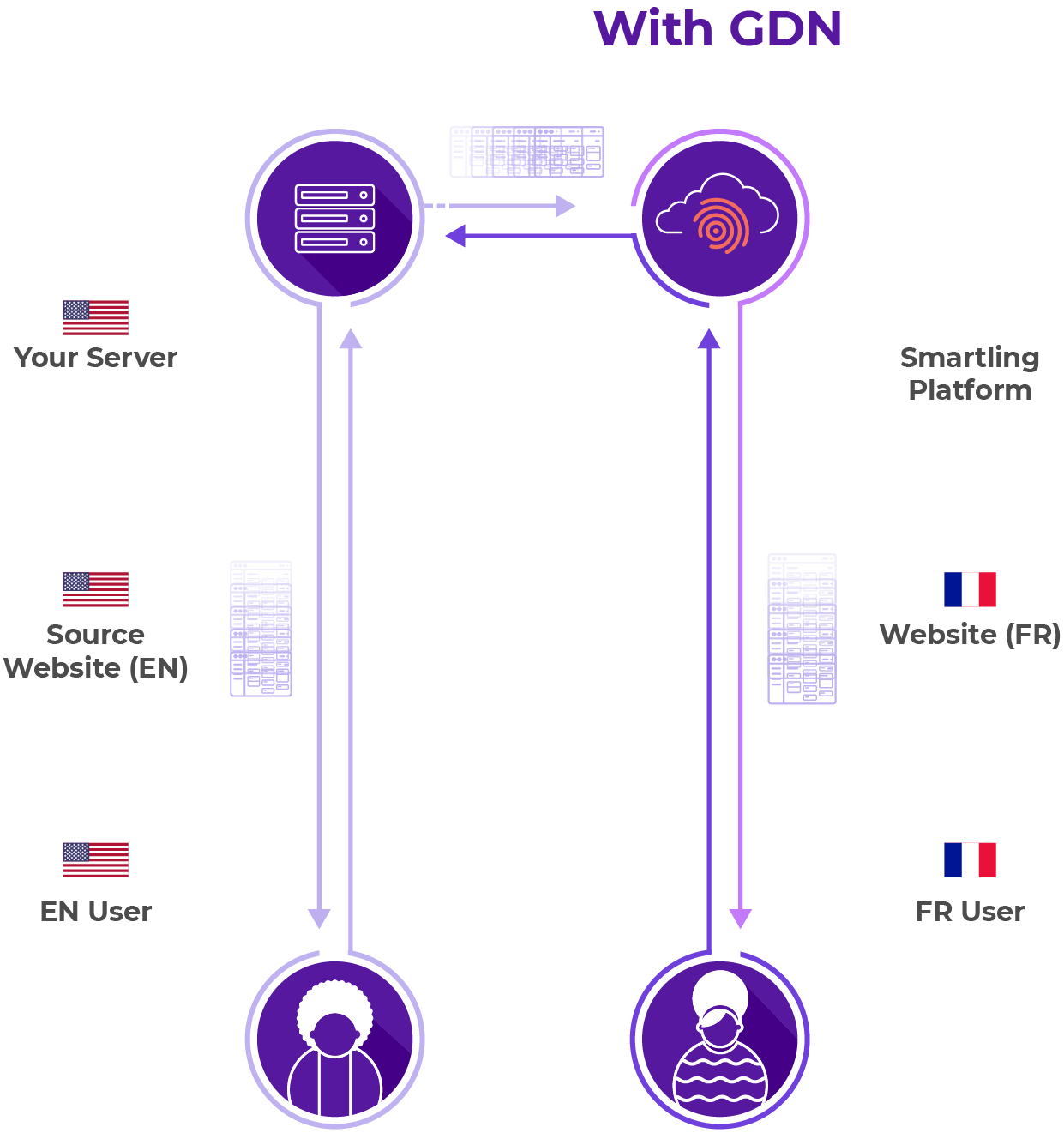The power of content marketing is undeniable—it acts as a bridge to connect brands with their audiences through valuable, engaging content. But to truly maximize this potential, businesses must consider multilingual content marketing’s impact on target audiences. As global markets become increasingly accessible through digital channels, companies that embrace a multilingual content strategy can unlock significant growth opportunities.
Statistics reveal that 60% of online shoppers avoid or infrequently buy from websites that are exclusively in English. This highlights a crucial point: if you want to reach a broader audience, you need to communicate in the languages that resonate with them. With a multilingual content marketing strategy, brands can expand their reach and demonstrate a commitment to diverse customer bases.
In this article, we’ll explore the nuances of multilingual content marketing and discover how you can use it to succeed.
What is multilingual content marketing?
Multilingual content marketing involves sharing your message in different languages to connect with audiences around the world. This includes creating blog posts, social media updates, and videos that speak directly to your target audience in their native language.
At Content Marketing World 2014, Drew James, a publisher and brand director at Target marketing, highlighted the importance of crafting unique brand messages globally. “A brand is not what the brand thinks it is—a brand is what customers think it is,” he says. ”And you want to make sure that the brand experience you're delivering around the world feels native. It feels like it was created and delivered for particular audiences all over the globe.”
Several well-known brands excel in multilingual content marketing. For example, Coca-Cola tailors its advertising campaigns to reflect local cultures by using local languages and symbols that resonate with regional audiences. 
Coca-Cola’s localized ad campaign in India (Source)
The importance of localization
Multilingual content marketing is not just about translating content into various languages—it’s also about content localization. A marketing campaign that resonates well in one culture might fall flat in another if it doesn’t account for local customs, humor, and preferences.
Localization involves adapting your content to fit each market’s cultural and social nuances. This helps you create a more personal connection with your audience and can significantly enhance engagement and loyalty.
Here’s what you’ll need to localize:
- Website content: Adapt all text, images, and user interfaces for each target market.
- Blog posts: Tailor topics to local interests and trends.
- Social media posts and marketing materials: Localize messaging and visuals for different social media platforms and audiences.
- Email marketing campaigns: Customize subject lines and content to fit local preferences.
- Videos and multimedia: Localize scripts, subtitles, and visuals to appeal to local cultures.
- Legal documents: Ensure compliance with local laws and regulations.
- Product descriptions: Use language and terms that resonate with local consumers.
Want more localization tips? Read our guide on how to craft a successful content localization strategy.
Why is multilingual content marketing so impactful?
Multilingual content marketing is a powerful strategy for businesses that are looking to expand their reach and connect with diverse audiences.
Let’s look at some reasons why it’s important for a global strategy:
Enhanced global presence
One of multilingual content marketing’s most significant advantages is its ability to enhance your global presence. Multilingual content can help you reach a wider audience, boost your brand awareness, and tap into new markets. This is especially important in today's interconnected world, where businesses need to cater to customers’ needs across different regions and cultural backgrounds.
Higher search engine rankings
Potential customers often search for products or services in their local language. Because of this, it’s crucial for businesses to optimize their online presence accordingly.
For instance, let's consider the search results for jouets pour tout-petits in French, which translates to “toys for toddlers.” The search results display relevant content in the query’s original language.  Multilingual SEO content improves search rankings. (Source)
Multilingual SEO content improves search rankings. (Source)
Tailoring your content for multilingual search engine optimization (SEO) improves your search rankings and visibility in international markets. When you create content in your target audience’s native language, you increase the chances that your content will appear in relevant searches. This can lead to more organic traffic and improved visibility for your brand.
Check out our detailed guide to learn more about implementing multilingual SEO.
Improved engagement and conversions
Multilingual content marketing can also boost engagement and conversions by providing more personalized customer experiences. When customers can access content in their native language, they are more likely to engage with your brand and make a purchase. This is because language plays a crucial role in building trust and establishing a connection with your audience.
With multilingual content marketing, you can create a consistent brand experience across demographics and languages. This consistency helps you build brand loyalty and achieve higher conversion rates and long-term success.
How to create a multilingual content marketing strategy
Successful multilingual content marketing starts with a robust content strategy. Let’s break down how to do this effectively:
Understand your audience
The first step in crafting a multilingual content strategy is to truly understand your audience with market research. This means going beyond basic demographics and delving into your target markets’ cultural nuances, preferences, and behaviors.
Use tools like Google Analytics to analyze each audience and their interests. Look for patterns in language use, content engagement, and purchasing behavior. Once you have this data, segment your audience based on language, culture, and preferences. This segmentation will help you tailor content to meet their specific needs.
For example, a brand selling outdoor gear might find that its Spanish-speaking audience prefers content focused on family activities, while its English-speaking audience is more interested in extreme sports.
Localize your content
Start by translating your core message, but then adjust the content to reflect local idioms, references, and cultural norms. Studies show that 86% of localized campaigns have higher conversions than English-only campaigns.
For instance, a marketing campaign that uses American sports references might not resonate with a European audience. Instead, consider using local sports references that your audience can relate to.
And don’t forget about visuals. Images, colors, and symbols can have different meanings in different cultures. Ensure that your visuals align with local expectations and do not unintentionally offend or confuse your audience. For example, while some cultures associate the color white with purity, others use it to indicate mourning.
Additionally, work with native-speaking translators to learn about cultural contexts and local customs, values, and taboos. This knowledge will help you create content that local audiences will find familiar and engaging.
Optimize content for multilingual SEO
To ensure that your content reaches the right audience, implement multilingual SEO best practices. This involves conducting keyword research in each target language and understanding different markets’ search behaviors.
Use tools like Google Keyword Planner to identify relevant keywords in each language. Consider local search engines as well. For example, if you’re targeting audiences in China, optimize your content for Baidu rather than Google.
Make sure to optimize all on-page elements, including titles, meta descriptions, and header tags, in your target language. This will improve your visibility in search results. Additionally, create localized URLs that reflect the content’s language and region.
But don’t overlook SEO’s technical aspects, such as hreflang tags, which show your pages’ language and regional targeting to search engines. This prevents duplicate content and ensures that users land on the correct version of your site.
Promote your content
A content strategy is incomplete without a solid content promotion plan. This involves leveraging the right channels to reach your audience where they are most active.
Here are a few digital marketing channels you can consider:
Social media
Different regions have different social media preferences. While Facebook and Instagram might dominate in the United States, platforms like WeChat or VKontakte may be more popular in other parts of the world.
Email marketing
Segment your email lists based on language preferences and send targeted campaigns. Ensure that your emails are culturally relevant and resonate with the local audience. Personalization is key—use local names, references, and even holidays to connect with your audience.
Content partnerships
Collaborate with local influencers, bloggers, or publications to promote your content. These partnerships can enhance your credibility and expand your reach within the community. Local voices can also provide insights that make your content feel more authentic and relatable.
Measure and adjust
The final piece of your multilingual content marketing strategy is measurement and adjustment. This is where you analyze your content’s performance and make necessary changes to improve its effectiveness.
Use analytics tools to track engagement, conversion rates, and other key performance indicators across different languages and regions. Google Analytics, for example, can provide insights into what content resonates most with your audience.
For more information, take a look at our article on how to evolve your content strategy when entering new markets.
Building multilingual content marketing into existing workflows
Implementing multilingual content marketing requires a powerful tech stack. Let’s look next at how you can leverage technology to succeed in your multilingual content marketing efforts:
AI-powered human translation
AI translation tools can quickly process large volumes of content. This means businesses can send their messages to global audiences faster than ever before while spending much less.
Smartling’s AI-Powered Human Translation is a game changer for businesses looking to enhance their multilingual content marketing. By combining AI’s efficiency with human translators’ nuanced understanding, we provide cost-effective, fast, and high-quality translations.
Use a translation proxy like Smartling’s Global Delivery Network
Our Global Delivery Network (GDN) ensures that your multilingual content is easily accessible and loads quickly for users around the world. This no-code translation proxy eliminates delays and provides seamless multilingual user experiences, which is vital for keeping visitors engaged. Fast, efficient content delivery reflects positively on your brand and encourages users to explore more.  Smartling’s GDN speeds up global content delivery. (Source)
Smartling’s GDN speeds up global content delivery. (Source)
Content management system integrations
A content management system (CMS) that supports multiple languages allows you to organize, publish, and manage multilingual content seamlessly. A multilingual CMS may not inherently incorporate advanced localization features, but it may provide built-in integrations with various translation tools. CMS integrations are essential for smooth content workflows, especially if you have a multilingual website.
Lyft’s success with multilingual content
Lyft is an American company that provides various transportation services, including ride-hailing services, bike and scooter rentals, car rentals, and food delivery options. The company recognized its need to expand beyond English to more effectively serve its diverse user base across Canada and the US.
Faced with a surge in translation requests, Lyft knew that its existing processes wouldn’t cut it. The company turned to Smartling for an efficient solution, which integrated seamlessly with its CMS, Contentful. This integration allowed Lyft to easily automate its translation workflows and significantly reduced its team’s manual effort.
As a result, Lyft successfully scaled its multilingual content to reach users in eight different languages, with a whopping 50% increase in content deployment speed.
Scale your multilingual content marketing with Smartling
Content is king—but creating high-quality multilingual content at scale can be a major challenge. That's where Smartling comes in.
We specialize in translating and localizing content across dozens of languages. Our unique approach combines machine translation’s speed with professional human linguists’ expertise. In addition, our AI-powered tools analyze your content, suggest translations, and even match you with the best translators for your brand voice and industry.
With Smartling’s technology and translation services, you can efficiently scale your multilingual content marketing efforts. Our platform integrates seamlessly with your existing tools so you can manage all your translations in one place. You can also use our team of language experts to ensure that your content is not just translated but also adapted to resonate with local markets.
Create content that drives exponential growth with Smartling—book a meeting today.
%20052925%20-%20AI%20Translation%20101%20(1).png)
.jpg)